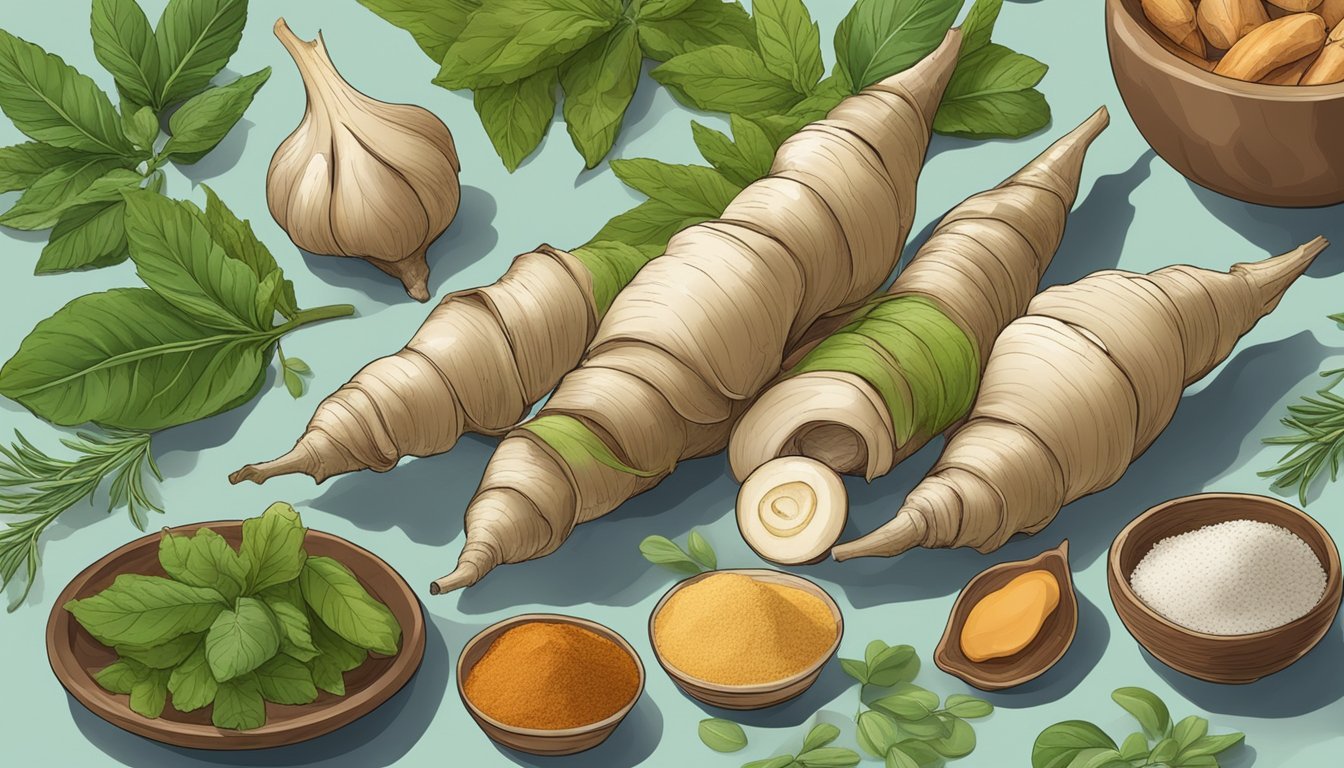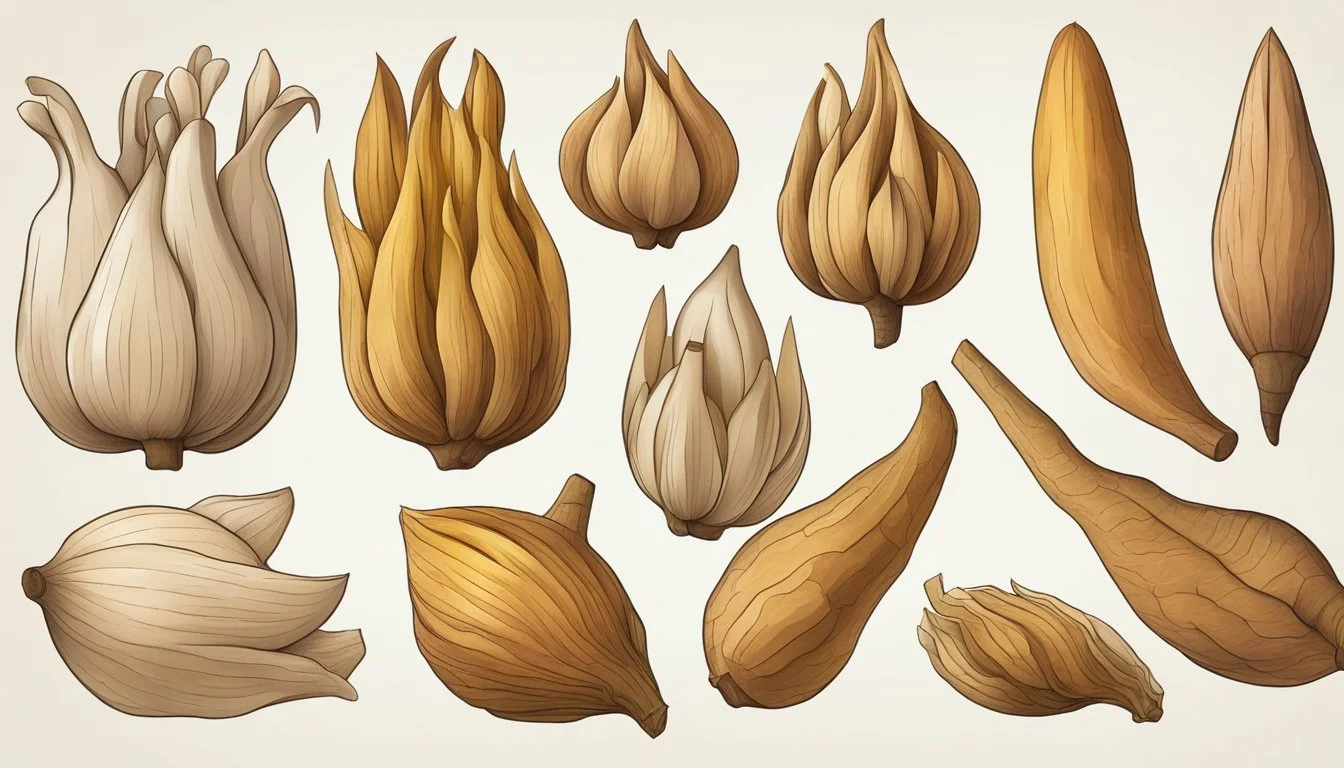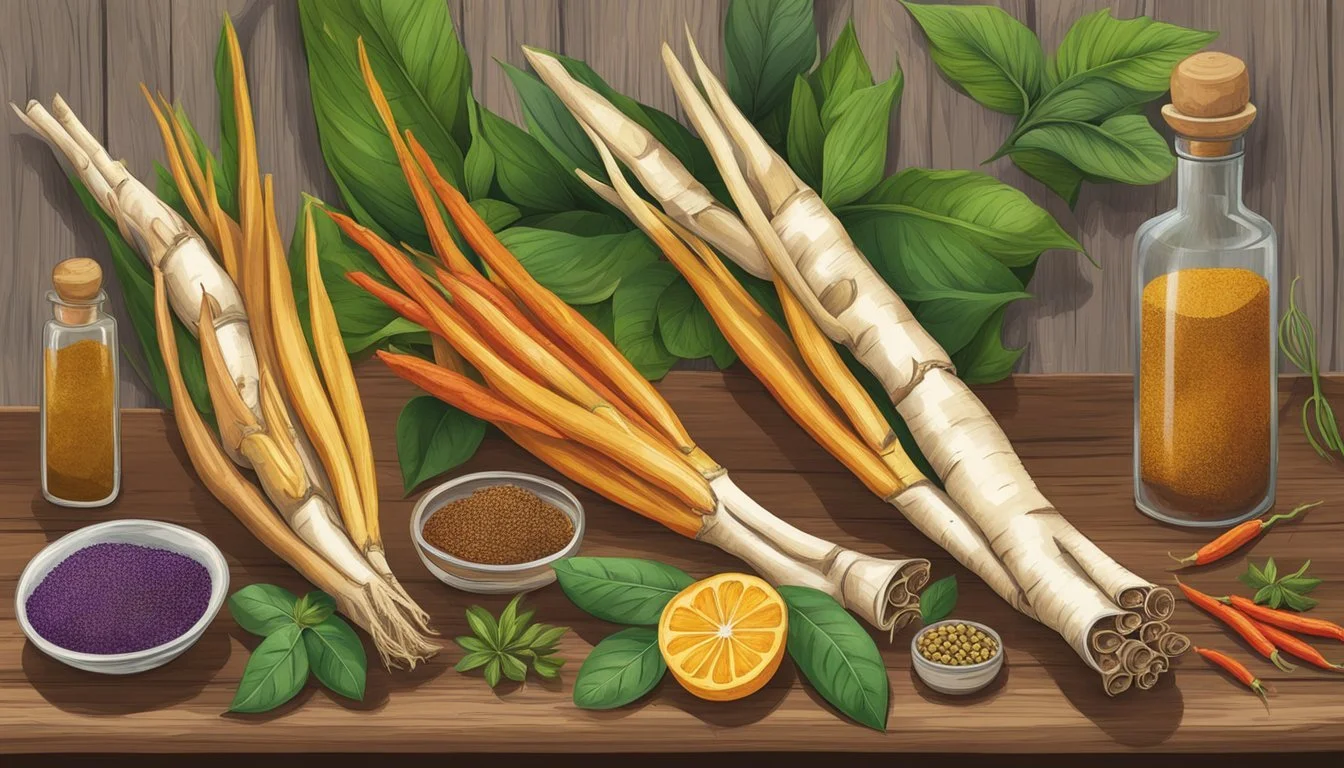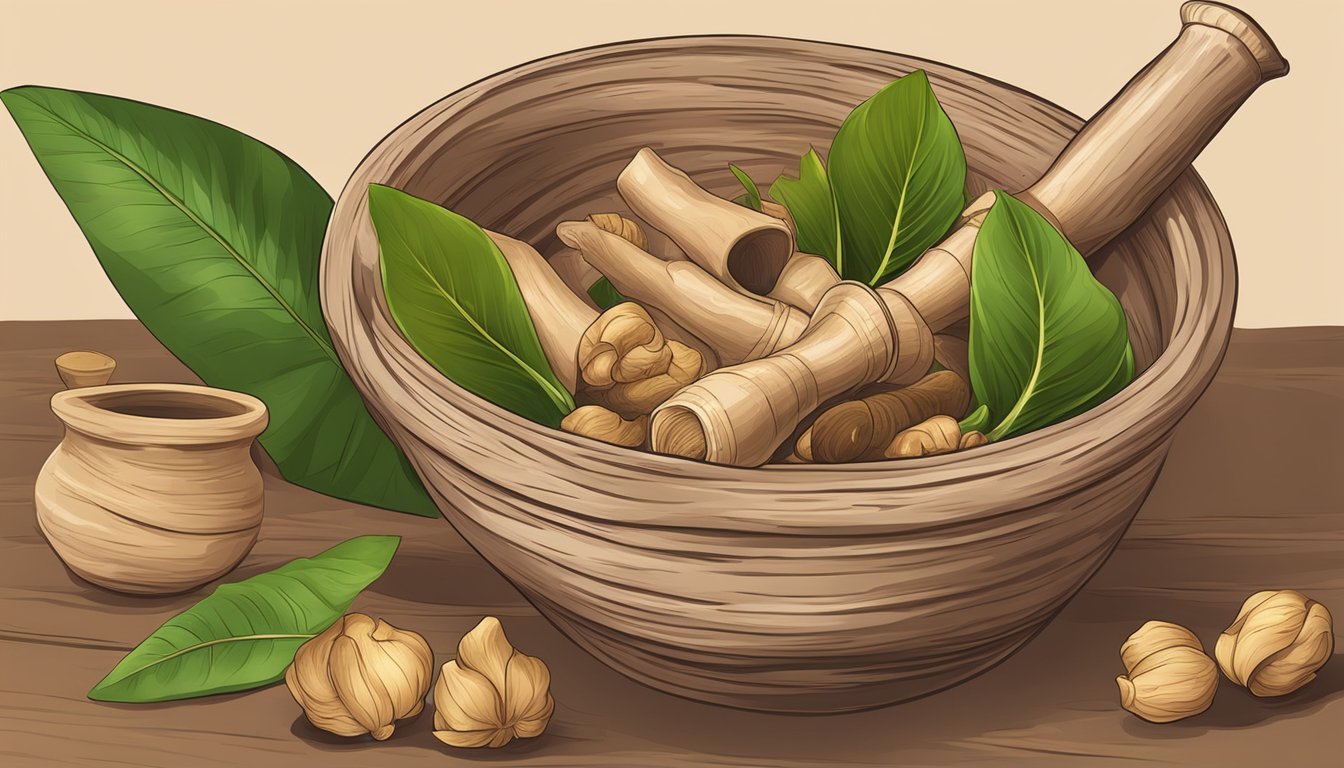Does Galangal Go Bad?
Storage Tips and Shelf Life Explained
Galangal, a member of the Zingiberaceae family, is a spice often used in Thai cuisine for its unique flavor. Known for its sharp, citrusy aroma, galangal adds a distinct zing to dishes. Fresh galangal, however, can deteriorate quickly, especially if not stored properly. Galangal in powdered form can last up to 1 to 2 years at room temperature, while fresh galangal typically remains usable for up to three weeks if kept in the refrigerator.
The paste form of galangal also has a limited shelf life, lasting about 6 to 7 months if left unrefrigerated. This versatility in form and longevity makes it a convenient ingredient for various culinary applications. Whether opting for fresh, powdered, or paste form, understanding the storage needs of galangal is crucial to maintaining its potency and flavor.
For those who frequently incorporate this spice into their cooking, knowing how to store galangal effectively ensures that dishes are always bursting with the desired flavor. Proper storage techniques can significantly extend the life of this essential Thai spice, making it a valuable addition to any kitchen.
Understanding Galangal and Its Varieties
Galangal is a spice with unique characteristics, belonging to the ginger family Zingiberaceae. It has several varieties, each with distinct flavors and culinary uses.
The Basics of Galangal
Galangal is a rhizome, similar to ginger, commonly used in Asian, Southeast Asian, and Indian cooking. It provides a peppery and spicy flavor with citrusy undertones and a hint of pine. Available in dried, powdered, and fresh forms, galangal enhances the depth of various dishes. It's particularly valued for its warm, earthy qualities, making it a staple in soups, curries, and stir-fries.
Lesser Vs. Greater Galangal
There are two main types of galangal: lesser galangal (Alpinia officinarum) and greater galangal (Alpinia galanga).
Greater galangal: Known for its robust citrusy and pine-like notes, it is prevalent in Southeast Asia.
Lesser galangal: Smaller, sharper in taste, and often used in medicinal contexts. It has a more intense, fiery flavor, and is commonly found in Southern Chinese cuisine.
Both types serve different purposes, adding unique layers to cooking.
Galangal in the Zingiberaceae Family
Galangal belongs to the Zingiberaceae family, which also includes ginger and turmeric.
Plant Morphology: Galangal plants grow up to 2 meters tall, featuring upright, reed-like stems encased in sheaths.
Rhizomatic Roots: The rhizome is the edible part, characterized by its gnarled, tough exterior and aromatic qualities.
Understanding its place in this botanical family highlights galangal’s diverse applications in culinary traditions, reflecting its warm and earthy profile.
Culinary Uses of Galangal
Galangal is a versatile ingredient with a warm, earthy spice and citrusy undertones. It is prominent in many Thai and Southeast Asian dishes, adding a unique flavor profile that differentiates it from ginger and turmeric.
Galangal in Cooking
When cooking with galangal, it's important to prepare it properly due to its dense and fibrous texture. Fresh galangal should be thoroughly washed and peeled using a vegetable peeler or spoon.
It can be finely minced to add directly to salads or dressings. For curries, galangal can be ground into a paste with other herbs and spices.
Infusing oils with galangal by simmering sliced pieces in a neutral oil for about 15 minutes is another method. Additionally, galangal can be sliced and added to simmering broths for soups like Tom Yum and Tom Kha Gai to enhance the depth of flavor.
Popular Galangal-Incorporated Dishes
Galangal is essential in various traditional dishes.
Tom Yum and Tom Kha Gai soups rely on galangal for their distinct, zesty flavor. In curries, both green and red, galangal ground with spices forms a vibrant paste.
Stir-fries also benefit from its aromatic qualities. Just a small amount can elevate the entire dish, adding a unique, piney taste that blends well with other ingredients.
Substitutes for Galangal
If galangal is unavailable, ginger can serve as a suitable substitute due to its similar texture and heat.
However, ginger lacks the citrusy undertones of galangal, so adding a bit of lime zest or lemon juice can bridge the flavor gap. Turmeric is another potential substitute with its earthy qualities, though it imparts a more intense color and slightly different taste profile to the dishes.
Using a combination of these can help replicate the distinct characteristics of galangal in various recipes.
The Shelf Life of Galangal
Galangal, whether fresh, dried, or powdered, has varying shelf life spans that depend heavily on storage conditions. Understanding these differences and knowing the signs of spoilage can help ensure its longevity and maintain its culinary quality.
Fresh Galangal vs. Powdered and Dried
Fresh galangal typically lasts about one to two weeks when stored in the refrigerator. If left at room temperature, it spoils more quickly, often within a few days.
In contrast, powdered galangal can last for one to two years when kept in an airtight container at room temperature. Dried galangal, often sliced, can be stored for up to a year if kept in a cool, dark place.
Indicators of Spoilage
Detecting spoilage in galangal involves observing changes in texture, color, and smell.
Fresh galangal that has gone bad will become soft, mushy, and may develop mold. Discoloration, like dark spots or a general browning, is a clear sign of spoilage.
Dried galangal can sometimes become brittle and lose flavor over time. Mold growth or an off-smell indicates it’s no longer safe to use.
Powdered galangal will clump together and may exhibit a musty odor if spoiled.
Proper Storage Methods
Proper storage significantly extends the shelf life of all forms of galangal.
Fresh galangal should be refrigerated, ideally wrapped in a damp paper towel and placed inside a plastic bag to maintain moisture.
Dried galangal should be kept in an airtight container in a cool, dark place. Avoid exposure to light and moisture to prevent mold growth.
Powdered galangal needs to be stored in an airtight container away from heat and humidity. Freezing is also viable for all forms; fresh or grated galangal can be frozen in ice cube trays, then transferred to freezer bags for longer storage.
Ensuring these storage practices helps maintain the flavor and usability of galangal for extended periods.
Health Benefits and Nutritional Value
Galangal root is known for a variety of health benefits. This powerful spice has potent antioxidant and anti-inflammatory properties and is being studied for its potential in cancer research.
Antioxidant Properties of Galangal
Galangal contains polyphenols, a group of antioxidants that help combat oxidative stress. These antioxidants can protect cells from damage caused by free radicals.
Research has linked galangal to improved cognition, enhancing memory and lowering LDL cholesterol levels.
Additionally, galangal may aid in combating heart disease and diabetes by improving overall heart health and regulating blood sugar levels.
Anti-inflammatory Effects
Galangal's anti-inflammatory properties help reduce joint stiffness and pain. These properties are particularly beneficial for individuals suffering from conditions like arthritis and other inflammatory diseases.
Galangal fights inflammation by inhibiting TNF-alpha activity, which also helps in reducing symptoms of depression.
Galangal and Cancer Research
Studies have shown promising results regarding galangal's anticancer properties. Compounds in galangal have been found effective against various forms of cancer, including colon, liver, and breast cancer.
Research has identified a compound called 1'-acetoxychavicol acetate (ACA) as being particularly potent in brain protection and in reducing age-related cognitive decline.
The leaf extracts from lesser galangal have demonstrated anticancer activities, notably against leukemia and melanoma cells. This makes galangal a potential adjunct in cancer treatment.
By including galangal in your diet, you can tap into these multiple health benefits, making it a valuable addition to your nutritional regimen.
Galangal in Traditional Medicine
Galangal root, a member of the ginger family, has been used for centuries in various traditional medicinal systems. Rich in antioxidants and bioactive compounds, it offers multiple health benefits, including reducing inflammation and alleviating nausea.
Ayurvedic and Southeast Asian Practices
In Ayurvedic medicine, galangal is cherished for its ability to treat a range of ailments. Practitioners use it to combat respiratory issues, digestive problems, and inflammation. It is often incorporated into teas and tonics designed to boost general health.
In Southeast Asia, galangal is a staple in traditional medicine systems like Thai and Indonesian medicine. It is particularly valued for its antimicrobial properties and uses in treating stomach disorders such as indigestion and gas. The root is also applied topically to alleviate skin irritation and infections.
Contemporary Health Supplements
In today's health supplement market, galangal root is gaining popularity for its therapeutic properties. Products containing galangal are often marketed for their ability to boost the immune system, relieve pain, and support digestive health.
Galangal supplements are typically available in various forms, including capsules, powders, and extracts. They are sought after for their high content of antioxidants, which help fight oxidative stress and reduce inflammation. These supplements also claim benefits for improving cognitive function and managing chronic diseases like type 2 diabetes.
Purchasing and Finding Galangal
Galangal, often referred to as Thai ginger, is available in various forms and typically found in specialized stores or online. Knowing where to buy and how to select quality galangal ensures you get the best flavor and freshness.
Where to Buy Galangal
Galangal can be purchased at Asian markets that specialize in Thai or broader Southeast Asian cuisines. These stores often have the freshest varieties due to regular imports.
Online shopping is another convenient option. Platforms like Amazon and specialty food websites offer both fresh and dried galangal.
Local supermarkets sometimes carry galangal, particularly in areas with diverse populations. Stores such as Walmart may stock it in their international foods section.
Buying from reputable sources ensures the spice's quality and authenticity.
Tips for Selecting Quality Galangal
When selecting fresh galangal, look for firm, pale, and unblemished roots. The skin should be intact and free from wrinkles or dryness.
Check the aroma: Fresh galangal has a strong, fragrant smell. If the scent is faint or off, it may not be fresh.
For dried galangal, ensure it’s well-sealed and stored away from moisture. The slices should appear robust and uniform in color.
Store it properly: Fresh galangal keeps well in the refrigerator for up to two weeks, wrapped in a paper towel and stored in a plastic bag. Dried galangal can last several months when kept in an airtight container in a cool, dark place.
Proper selection and storage maintain the root’s distinct flavor and potency.
Side Effects and Potential Risks
Consuming galangal root is generally considered safe when used in typical food amounts. However, excessive intake, particularly through supplements, may pose risks due to limited information on safe dosing.
Possible Side Effects:
Gastrointestinal Issues: High doses of galangal may lead to stomach upset, heartburn, or diarrhea.
Allergic Reactions: Rarely, some individuals might experience allergic reactions such as skin rashes or itching.
Interaction with Medications: Galangal could potentially interfere with medications, especially those affecting blood clotting.
Health Concerns:
Bacterial Contamination: Galangal, like other roots, can harbor bacteria like E. coli if not properly cleaned.
Vibriosis Risk: In rare cases, improper handling or storage can lead to infection from bacteria like Vibrio species.
Although some studies suggest that galangal might have effects on sperm count and male fertility, these claims require more scientific validation. Limited evidence also hints at anti-cancer properties, but more research is needed to confirm these benefits.
Users must exercise caution and ideally consult with a healthcare provider before including high amounts of galangal in their diet or taking it as a supplement, especially if pregnant, nursing, or on medication.
Galangal in Research and Studies
Scientific studies investigate galangal for its potential impacts on cognitive function, blood sugar regulation, heart disease, and antimicrobial properties against various microorganisms.
Cognitive Benefits and Memory
Research has shown that galangal may offer cognitive benefits. Activated constituents such as galangin demonstrate neuroprotective properties, potentially improving memory and brain function.
Animal studies suggest that compounds in galangal can boost cognitive performance and mitigate memory loss. These findings align with traditional uses of galangal in Asian medicine for mental clarity.
Galangal's Impact on Blood Sugar and Heart Disease
Galangal's effects on blood sugar levels and heart disease are of considerable interest. Studies indicate that its ethanolic extract can lower blood glucose levels, making it relevant for managing type 2 diabetes.
The anti-inflammatory properties of galangal help reduce cardiovascular risks. Compounds like eugenol and other flavonoids within the plant exhibit potential benefits for heart health.
Antimicrobial Effects Against Microorganisms
Galangal displays significant antimicrobial activity against various microorganisms, including bacteria, fungi, and parasites. Specifically, it has demonstrated effectiveness against Salmonella Typhi.
The essential oils in galangal, rich in compounds like eugenol, have shown bactericidal properties. These oils can inhibit the growth of harmful bacteria and fungi, providing a natural means of combating infections.










